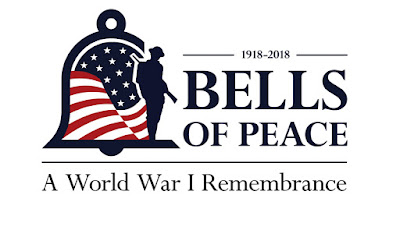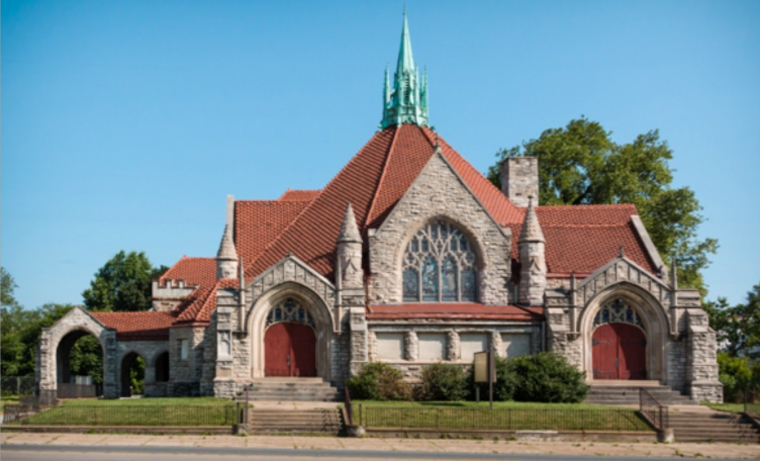World War One Delco Committee Member Barbara Selletti spoke at Media’s 2018 Memorial Day Parade on the changes during World War One in the roles and responsibilities of women. Her text is below:
In 1914 a war of many nations began in Europe, but the US remained neutral until April of 1917. This Great War would be fought with many terrible new weapons on the land, in the air, on and under the sea. One hundred years ago this month 300 thousand new American members of the American Expeditionary Forces, including men from Delaware County, were landed in France and in September of 1918 they would take part in the all-American offense in the Muse Argon. Two months later, on November 11th, 1918 this Great War to End all War would end. But this patriotic outpouring was not confined to the men of the military. What I will be speaking about today is what happened in Delaware County during those years.
The war created new opportunities for workers in the local industrial base of Philadelphia, Delaware, and Camden counties as it did in other parts of the nation. So much so that African-Americans, while poorly paid and forced to perform the least-desirable jobs, found chances for economic independence and advancement better in the Philadelphia region than in the South. War was good for business.
Beyond the paid workers, the need for more civilian volunteers to aid the war effort on the home front increased. For the first time, women who normally supported in the background of previous wars, were called to the foreground in a myriad of ways.
There was no part of society that didn’t contribute is some aspect. Americans made bandages, knit socks, collected books for the soldiers. They collected scrap metal and sold liberty bonds to raise money. They enrolled in Red Cross, Victory Corps, and Civilian Defense organizations to support the troops abroad.
The Food Conservation Administration (whose uniform I am wearing) promoted ways to substitute lesser used foodstuffs like fish, rye and corn syrup for meals, so meat, wheat and sugar could be sent as provisions overseas. Soon Meatless Mondays and Wheat-less Wednesdays became commonplace in American homes.
The National War Garden Commission encouraged Americans to contribute to the war effort by planting, fertilizing, harvesting and storing their own fruits and vegetables so that more food could be exported to our allies. Citizens were urged to utilize all idle land that was not already engaged in agricultural production. This including school and company grounds, parks, backyards or any available vacant lots. Women’s Land Army members advocated that civilians “Sow the seeds of victory”. U.S. School Garden Army (USSGA) organized children as “soldiers of the soil.”
When war was declared in 1917, the Young Men’s Christian Assoc. (YMCA) immediately volunteered its support, and President Woodrow Wilson quickly accepted it. The YMCA assumed military responsibilities on a scale that had never been attempted by a nonprofit, community-based organization in the history of our nation and would never be matched again. It was at the conclusion of this war that the military services began to institutionalize the massive human services work carried out by the YMCA.
Religious organizations mobilized to provide humanitarian aid on a scale never seen before. The Knights of Columbus’ Supreme Knight James A. Flaherty proposed to President Wilson that the Order establish soldiers' welfare centers in the U.S. and abroad. The Order raised more than $14 million for this program on its own and was allocated another $30 million from a national fund drive. But their efforts did not stop there. Following the war, the Knights established both a tuition-free education program for veterans and a job bank that placed more than 300,000 veterans with employers throughout the country.
American Jews, for the first time, were seen as international philanthropists, armed with the wealth and the initiative to help relief work overseas.
The Salvation Army, already an international humanitarian organization involved in the war since its start in 1914, conducted Bible classes, provided writing supplies, stamps, clothes-mending services and home-cooked food for soldiers. Their “doughnut lassies,” (female Salvation Army volunteers) cooked doughnuts in helmets to provide a quick and easy treat for American soldiers. (And if you go to the Lansdowne Theater today, you can try a fresh made one from the original recipe).
Although opposed to fighting, the Society of Friends (Aka Quakers) provided humanitarian relief for civilians affected by war at home and abroad through the American Friends Service Committee (AFSC). In France, the Friends War Victims Relief Committee (FWVRC) helped with construction, medical aid and agriculture. All differences of traditions were quickly forgotten as every organizational member was committed to a common goal of assistance.
When the United States declared war against Germany, the American Red Cross found itself embarking on the journey that would transform it almost overnight into the large and important influential organization it is today. As the public’s patriotic spirits soared in the early days of the war, President Wilson, as honorary chairman of the Red Cross, urged his fellow citizens to put their energies to work helping the Red Cross meet the needs of the thousands of young men joining the Allied forces on the battlefields of Europe.
Another significant but lasting change came into being that would change the face of society in profound ways. In 1918, due to the shortage of manpower, nearly three million new women workers were employed in food, textile and war industries. Many taboos and restrictions thrown up to keep women out of large-scale productions industries were broken down out of necessity.
America’s women were at work everywhere during World War I. They labored on the home front and overseas. They took jobs on the nation’s farms, in factories, in shipyards, and served in its military forces. They even learned to fly! (Like the League Island Naval Commander’s wife learned in Essington).
Approximately a million women filled the vacancies left by the men who were now in uniform. Many were young girls who had previously worked in local shops and department stores or who had never worked before. Many were wives who had once worked but had left their jobs to raise families or had never worked outside of their homes. The worked in non-traditional places such as Eddystone’s Munitions plant, Hog Island Shipyard, and various local mills.
World War I also marked an important “first” for American women. For the first time in the nation’s history, women were permitted to “join” the Armed Forces. Some 13,000, known as “Yeomanettes,” enlisted in the Navy to do clerical work stateside. Nearly 300 entered the Marine Corps as clerks and won the name “Marinettes.” More than 230 women traveled to France as part of the U.S. Army Signal Corps. There, they served as French-speaking telephone operators and were known as “Hello Girls” for the American Expeditionary force.
But they were not the only ones to travel overseas. Some 11,000 women, although not actual members of the armed forces, served abroad as nurses and ambulance drivers. Wealthy young women sailed the submarine-infested Atlantic, so they could drive ambulances (often during air raids) and persuaded their fathers to contribute an ambulance or two. Other women mortgaged their houses to finance a trip overseas, ready to offer their services even if it meant scrubbing floors. Women were also among the 6,000 Red Cross workers who sailed to France.
As a living historian, I often portray a Red Cross Nurse named Stephanie Pohle; a local girl who literally dedicated her entire life to nursing after she graduated from Lankenau Hospital prior to the start of WWI. She was given the Medal of St. Anna, the highest Russian civilian award for her distinguished service. As with so many other women who served in the war efforts, her heroic life is largely unknown (at least for now, but not if I have anything to do with it).
Civilian American Red Cross nurses worked side by side with Army Nurse Corps members, doing the same work in the field. They themselves often did not understand the difference in their status.
Like the men, the 25,000 American women who served overseas risked death, disease, and injury. An estimated 348 lost their lives. Some were killed in air raids and artillery bombardments. Others died or were left debilitated by the diseases and disorders bred by the filthy and worse-than-primitive conditions along the Western Front.
The exact number of women who were injured is still unknown. There are individual stories, however, that leave no doubt as to the seriousness of some of the injuries. When a hand grenade accidentally exploded near a writer and Red Cross worker, they sustained wounds that kept them hospitalized for two years. A women doctor caught in a gas attack suffered burned lungs. A study conducted in the 1920’s revealed that, among the women injured in the war, at least 200 were permanently disabled.
Despite their own efforts for regularization, Army and Navy nurses were held as only paramilitary. Thus, the Military, so quick to welcome them in service, refused them the rank and benefits that their responsibilities justified which continued through WWII.
All the women who devoted themselves fulltime to war work pioneered, faced unprecedented difficulties, persevered but found their own means of service. Women proved their resourcefulness, usefulness, reliability and heroism in the face of the challenges and dangers they confronted, and the hardships endured.
As you heard, actual membership in the military was not the only means for supporting efforts during World War I. Civilian organizations using good old Yankee ingenuity brought forth many avenues for humanitarian aid which still exists in some form one hundred years later. Women used their war experiences to push for the right to vote and paved the way for those who enjoy more life choices today. No one was left unchanged then or now. Young or old, male or female, they need to be honored and not forgotten.
I will close with a poem written by Moina Belle Michael in November 1918 which was inspired by the famous piece written by Canadian Colonel John McCrae, “In Flanders Field”. You may or may not know that it was through Moina’s tireless twenty plus years campaigning for memorializing of those who served during WWI, that gave us an internationally-recognized symbol of Remembrance and welfare for war veterans: the red field poppy.
Oh! you who sleep in Flanders Fields,
Sleep sweet - to rise anew!
We caught the torch you threw
And holding high, we keep the Faith
With All who died.
We cherish, too, the poppy red
That grows on fields where valor led;
It seems to signal to the skies
That blood of heroes never dies,
But lends a lustre to the red
Of the flower that blooms above the dead
In Flanders Fields.
And now the Torch and Poppy Red
We wear in honor of our dead.
Fear not that ye have died for naught;
We'll teach the lesson that ye wrought
In Flanders Fields.
Thank you.
 Summer’s in Full Swing, so Mark Your Calendar: Register by August 3rd to “Show off" your Delco Victory Gardens in all their Glory!
Summer’s in Full Swing, so Mark Your Calendar: Register by August 3rd to “Show off" your Delco Victory Gardens in all their Glory!




















































